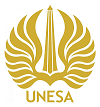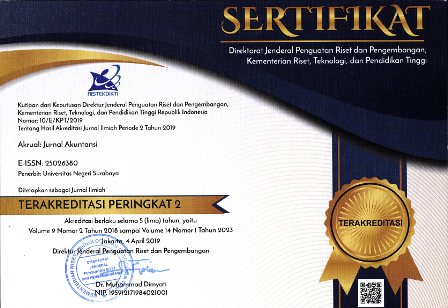Analisis Risiko Finansial Dengan Metode Simulasi Monte Carlo (Studi Kasus: Pt. Phase Delta Control)
DOI:
https://doi.org/10.26740/jaj.v8n1.p62-71Keywords:
Financial Risk Analysis, Monte Carlo SimulationAbstract
Abstract
Basically, the purpose of a company is make a profit and enrich the owners of the company. This is manifested by development and achievement of good performance, both in financial and operational perspective. But in reality, not all of companies can achieve good performance. One of them is because exposure of risk. This could threaten achievement of the objectives and existence of the company. Therefore, companies need to have an idea related to possible condition and financial projection in future periods that are affected by risk. One of the possible method is Monte Carlo Simulation. Research will be conducted at PT. Phase Delta Control with historical data related to production/sales volume, cost of production and selling price. Historical data will be used as Monte Carlo Simulation with random numbers that describe probability of each risk variables describing reality. The main result is estimated profitability of PT. Phase Delta Control in given period. Profit estimation will be uncertain variable due to some uncertainty
References
Gaspersz, V. (2002). Production Planning and Inventory Control Manufacturing 21.
Komarawidjaja, W., Garno, Y. S., Tjokrokusumo, S. W., Tjahjono, H., & Hariyadi, R. (2010). Optimalisasi Pemanfaatan Limbah Organik Sebagai Substitusi Media Kultur Mikroalga dalam Upaya Mereduksi CO2. Laporan Akhir Program Insentif Riset DIKTIDIKNAS, Pusat Teknologi Lingkungan, Badan Pengkajian dan Penerapan Teknologi. Terdapat pada: ejurnal.bppt.go.id
Lamming, R., & Hampson, J. (1996). The environment as a supply chain management issue. British journal of Management, 7(s1). DOI: https://doi.org/10.1111/j.1467-8551.1996.tb00147.x
Ninlawan, C., Seksan, P., Tossapol, K., & Pilada, W. (2010, March). The implementation of green supply chain management practices in electronics industry. In Proceedings of the international multiconference of engineers and computer scientists (Vol. 3, pp. 17-19).
Pujari, D., Wright, G., & Peattie, K. (2003). Green and competitive: influences on environmental new product development performance. Journal of business Research, 56(8), 657-671. DOI: https://doi.org/10.1016/s0148-2963(01)00310-1
Sundarakani, B., De Souza, R., Goh, M., Wagner, S. M., & Manikandan, S. (2010). Modeling carbon footprints across the supply chain. International Journal of Production Economics, 128(1), 43-50. DOI: https://doi.org/10.1016/j.ijpe.2010.01.018
Tersine, R. J., & Tersine, R. J. (1994). Principles of inventory and materials management.
Zhu, Q., Sarkis, J., & Lai, K. H. (2008). Green supply chain management implications for œclosing the loop. Transportation Research Part E: Logistics and Transportation Review, 44(1), 1-18. DOI: https://doi.org/10.1016/j.tre.2006.06.003
Zhu, Q., Sarkis, J., & Lai, K. H. (2008). Confirmation of a measurement model for green supply chain management practices implementation. International journal of production economics, 111(2), 261-273. DOI: https://doi.org/10.1016/j.ijpe.2006.11.029
Downloads
Published
How to Cite
Issue
Section
 Abstract views: 2521
,
Abstract views: 2521
, PDF Downloads: 1692
PDF Downloads: 1692


















